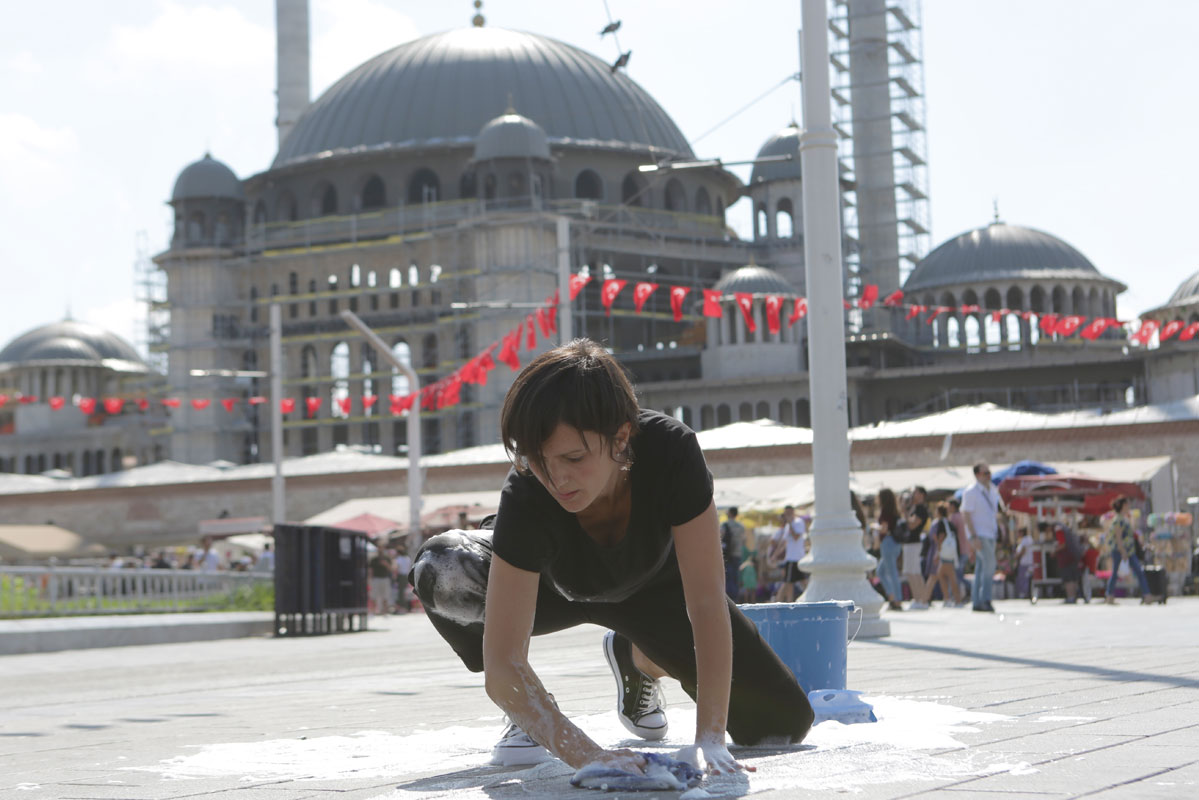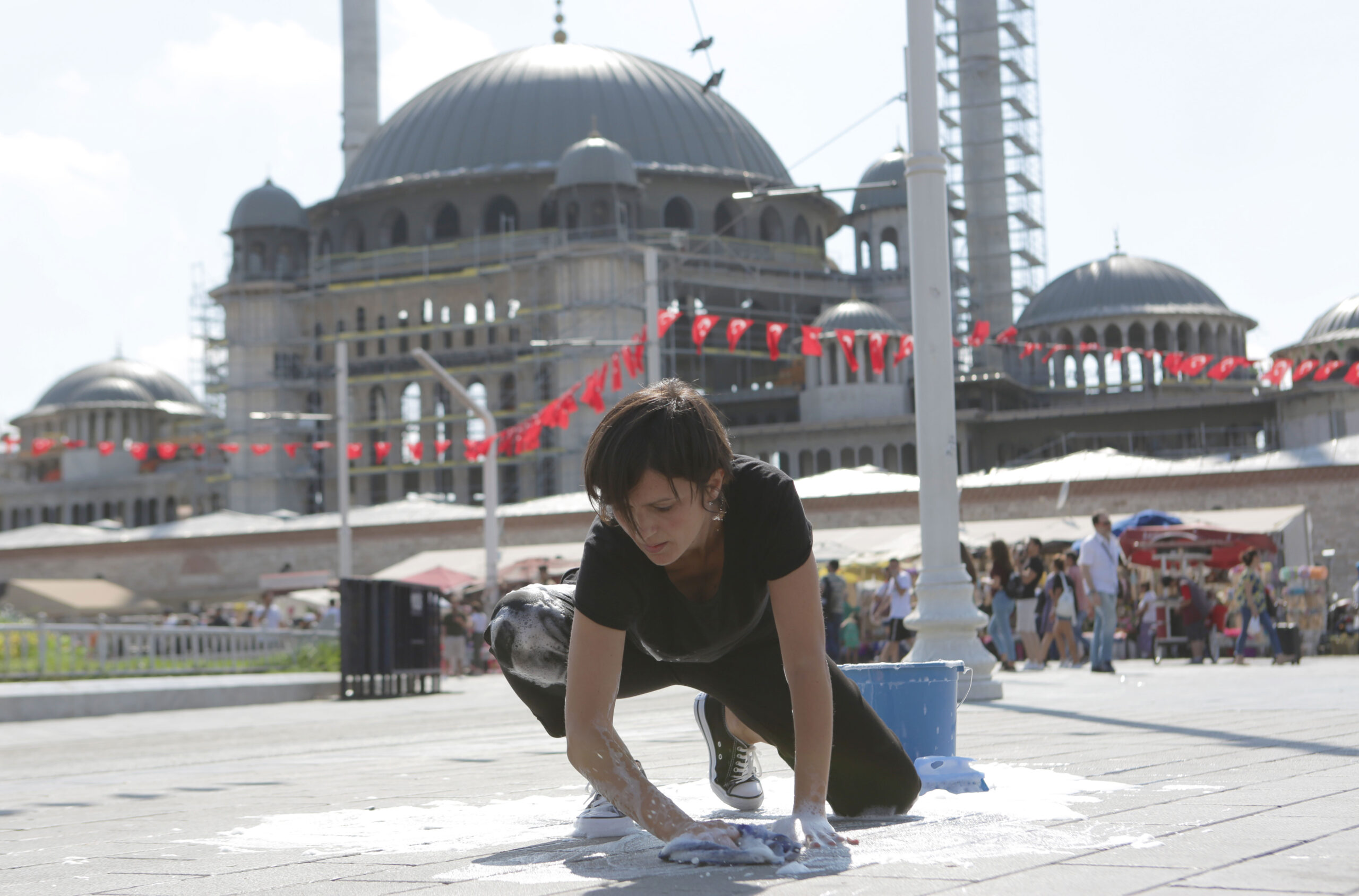Soap Opera
2019
Produzione On the Breadline, Istanbul, serie di foto su carta Hahnemühl, 80×100 cm
Video 4K, 5’ 10” colori
Sotto un sole a picco sul Monumento alla Repubblica scolpito dallo scultore italiano Pietro Canonica, ho deciso di iniziare a pulire con secchio e due spazzole piazza Taksim. Un gesto secco e semplice nel mezzogiorno di fuoco tra me e la città. Nel secchio dell’acqua ho messo qualche goccia di sapone che ho montato a neve come stessi preparando una torta, per festeggiare il giorno delle pulizie. Soap Opera è un termine legato al concetto televisivo americano di serial che tra la fine degli anni Settanta ed inizio anni Ottanta imperversavano nelle nostre TV al posto dei nostrani sceneggiati.
Il termine soap opera deriva dal tipo di prodotti pubblicizzati nelle prime produzioni statunitensi, detersivi e saponi di aziende che si rivolgevano al pubblico femminile quale destinatario principale della soap opera. Il sapone in questo caso pulisce, cancella e cerca di tirar via la sporcizia del luogo. Dallo straccio sgorga acqua nera. La cadenza giornaliera e ripetitiva dedicata alle donne della soap opera si trasforma da svago televisivo ad azione politica.
Soap Opera
2019
Production: On the Breadline, Istanbul
Series of photographs on Hahnemühle paper, 80 × 100 cm
4K video, 5’10”, colour
Beneath the blazing midday sun, in front of the Republic Monument in Taksim Square — a work by Italian sculptor Pietro Canonica — I began cleaning the square using a bucket and two brushes. A direct, minimal gesture, performed in the burning heat, marking an intimate yet public dialogue between myself and the city.
I added a few drops of soap to the water and whipped it into foam, as if preparing a cake — a small ritual to celebrate this day of cleaning.
Soap Opera draws its title from the American television serials that, from the late 1970s to the early 1980s, took over Italian TV screens, replacing traditional national dramas. The term itself originates from the cleaning products — soaps and detergents — advertised during these programs, targeting a predominantly female audience.
Here, soap becomes both a literal and symbolic element: it cleans, erases, and attempts to wash away the traces of dirt from the site. Black water flows from the cloth, embodying the impossibility of fully cleansing a place layered with history and conflict. The repetitive, domestic gesture traditionally associated with women — a daily routine echoed in the world of soap operas — transforms into an act of political resistance and poetic action.


